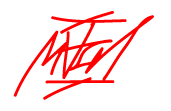The “Red Dot Theory” is a conceptual multimedia street art project executed in the streets of Barcelona between 2018 and 2022.
For a more comprehensive exploration, readers are encouraged to visit the project’s Instagram account: @red_dot_theory.
Introduction :
As a practitioner of the “graffiti bombing” discipline, the idea first originated from a
challenge to minimize tagging to its utmost simplicity, reducing it to a single press,
almost like an accidental occurrence, or an aborted “tag”.
The deliberate choice of using only red paint stemmed from the desire for cohesion
amidst the visually saturated streets of Barcelona, where graffiti, street art, and various
visual stimuli abound.
Red’s versatility on both light and dark surfaces, coupled with its potent universal
symbolism, served to accentuate the project’s visibility within the urban landscape.
The project’s methodology comprised two distinct components:
The Performance and the Documentation.
1.The Performance :
The performance in the street, illustrated by this massive invasion of red dots painted everywhere was guided by a secret objective, only revealed at the end of the project :
A “GPS Drawing” of a gigantic red dot with a diameter of several kilometers on the map of Barcelona.
To do so, each nights painting the red dots was dedicated to a specific zone.
An itinerary was sketched in order to fulfil all the streets , then executed and recorded through a GPS tracking device.
The combination of all those GPS tracks would reveal the giant Red Dot on the city and mark the finalisation of the project.
In total around 800 km of streets were walked and covered with thousands of Red Dots to achieve it.
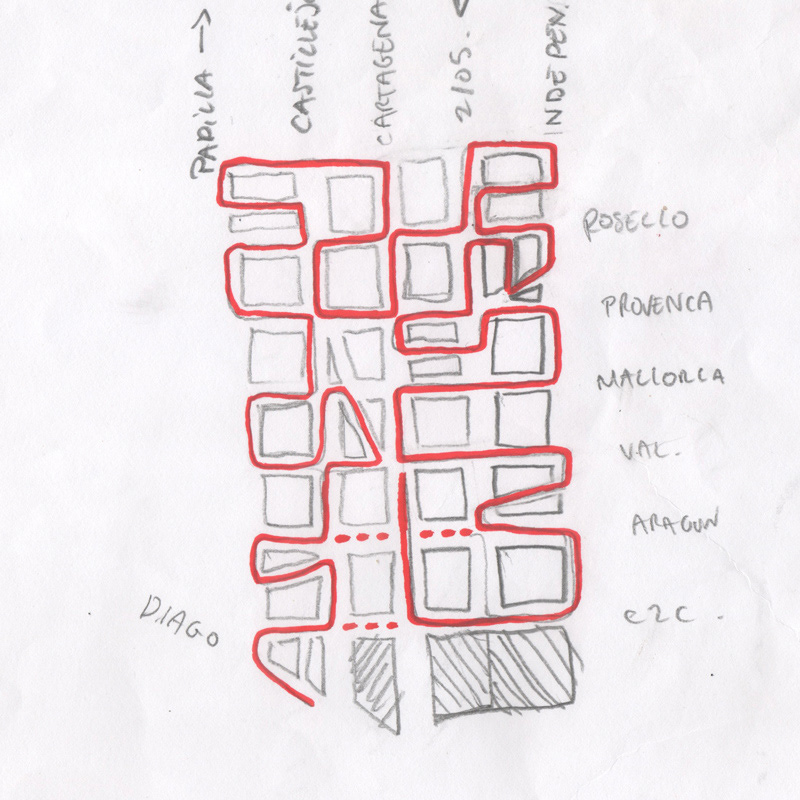
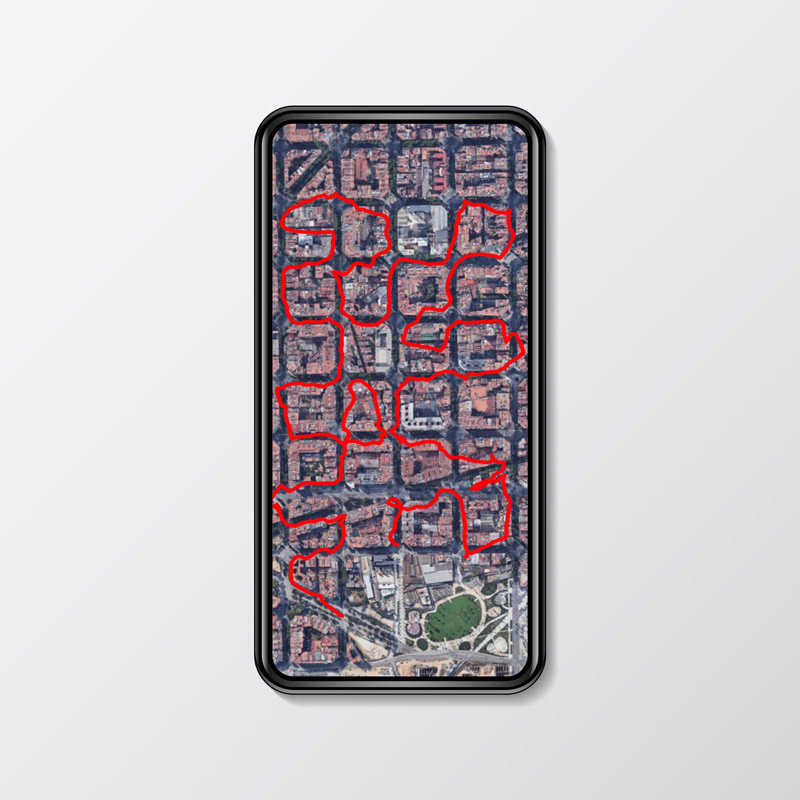
2.The Documentation :
Parallel to the performance, meticulous photographic documentation of the red dots in the streets was done.
It intended to capture the evolution of the project and its different aspects, leading to the creation of extrapolated artworks.
A selection of documentation and extrapolated works from the project were published on an Instagram account, serving as a digital testament to its unfolding narrative. Click here to view it.
The account invited curious viewers to immerse themselves in its enigmatic allure, sharing their reactions and assumptions throughout its realization.
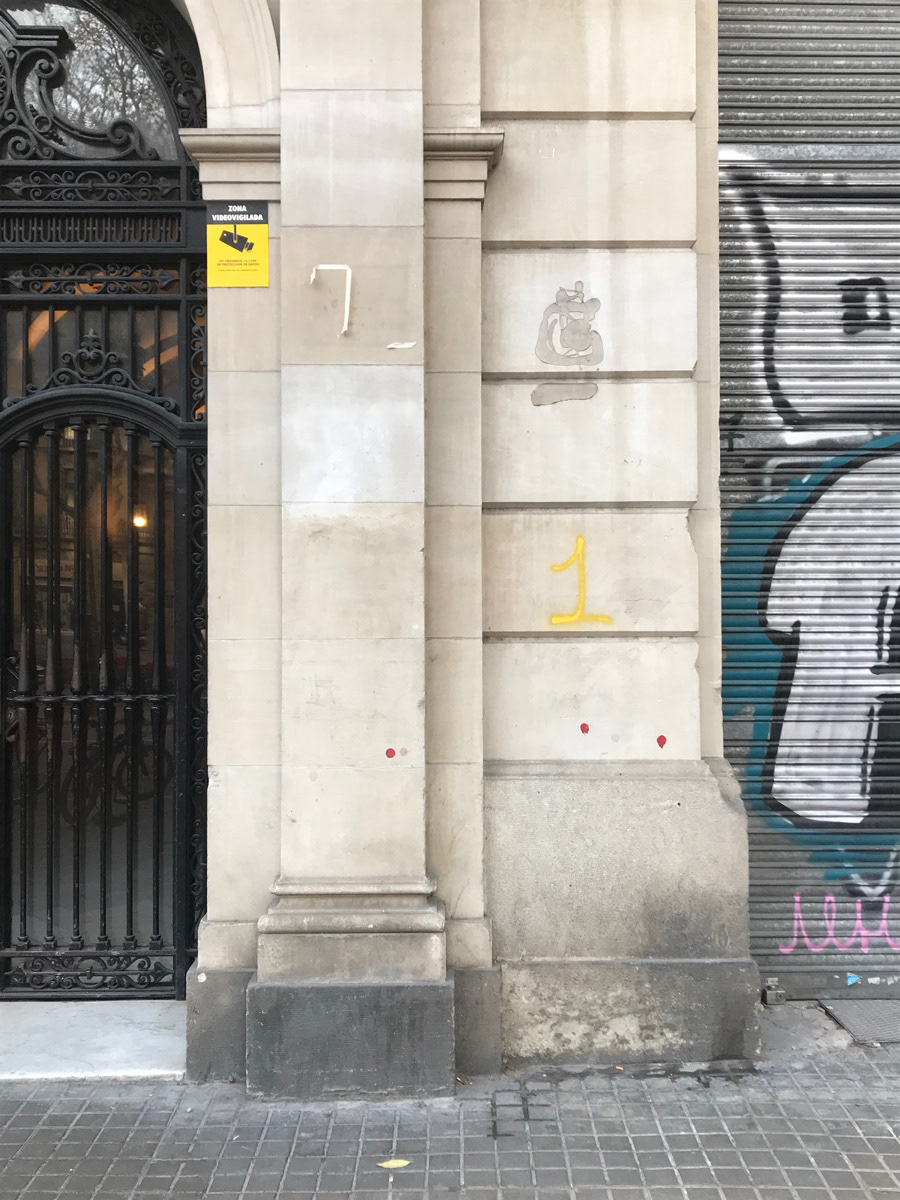
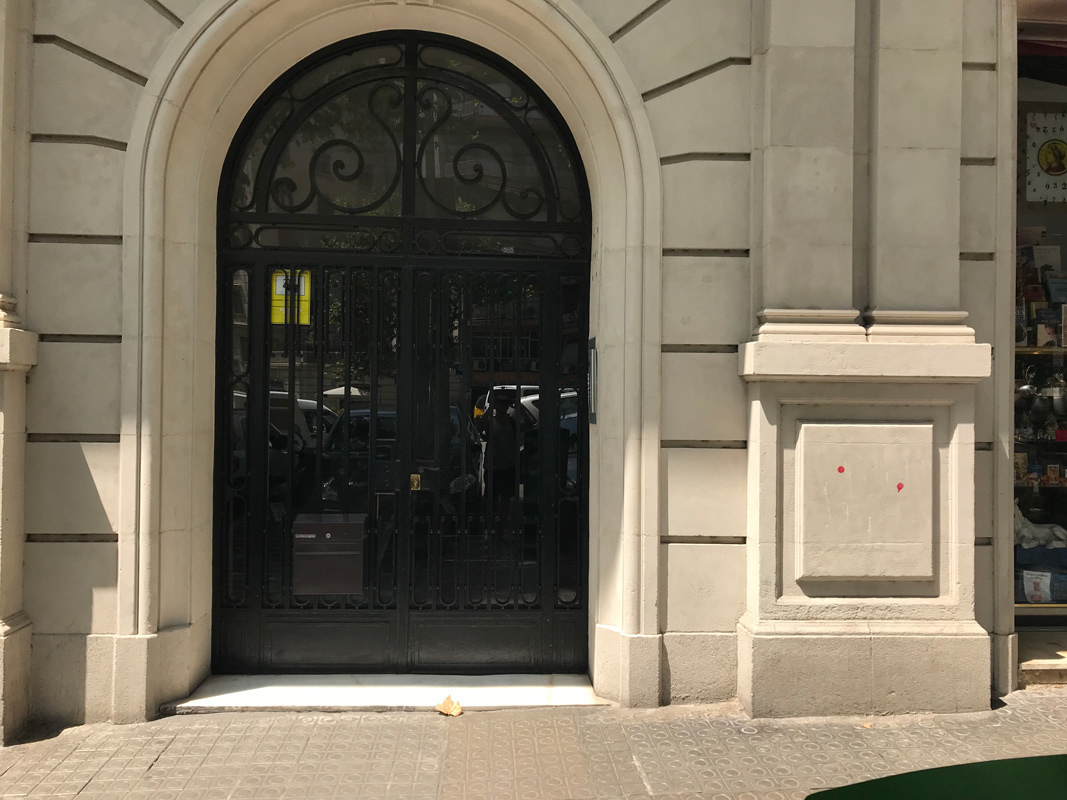
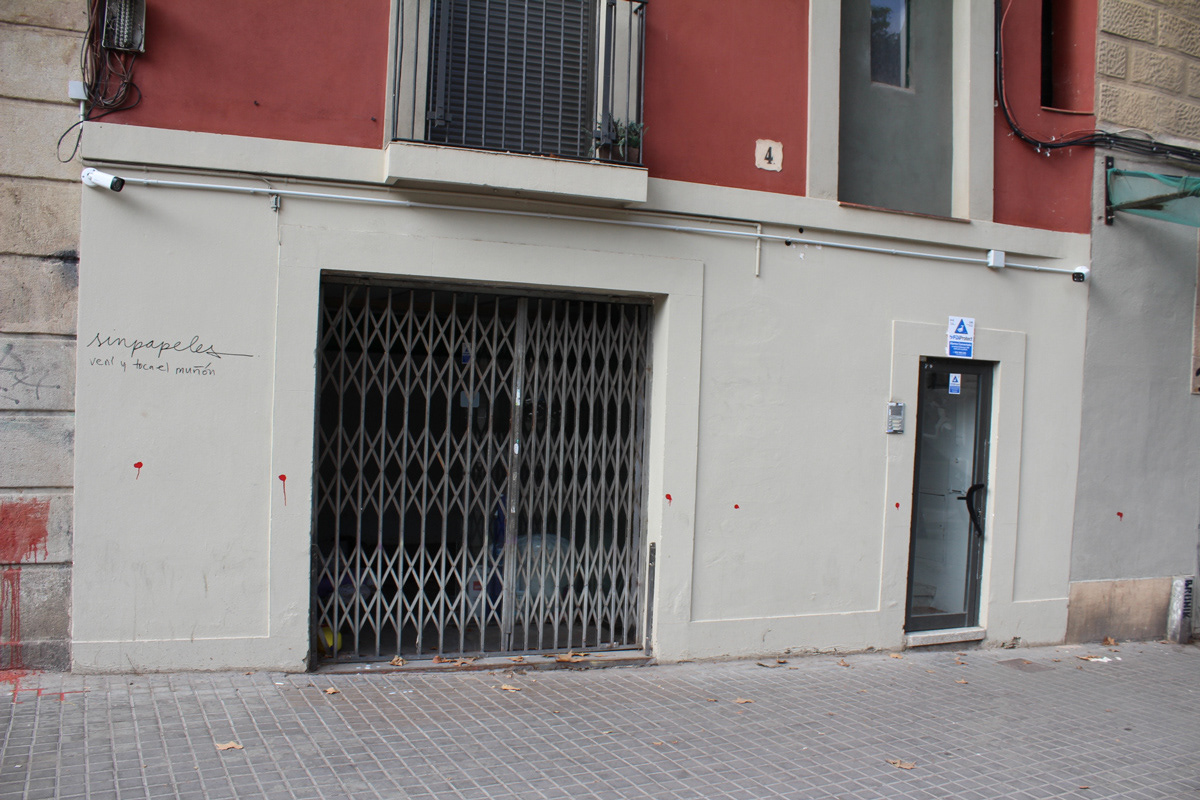
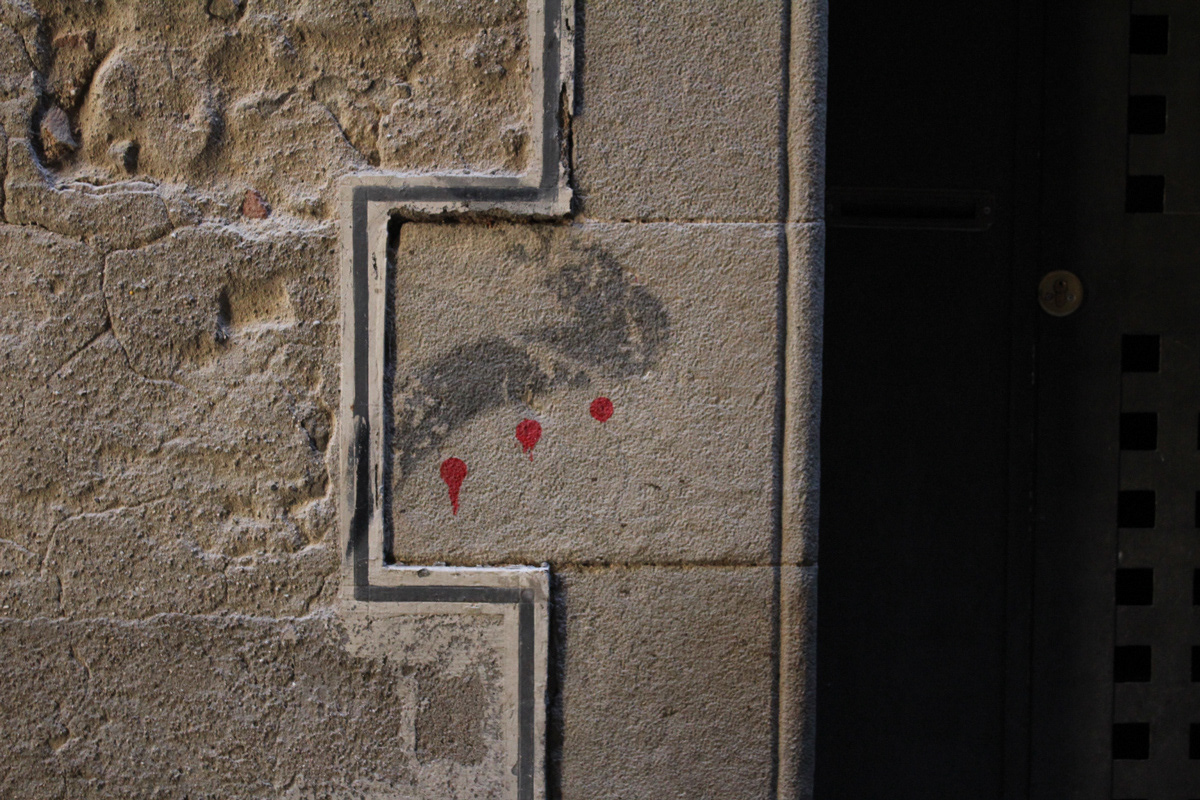
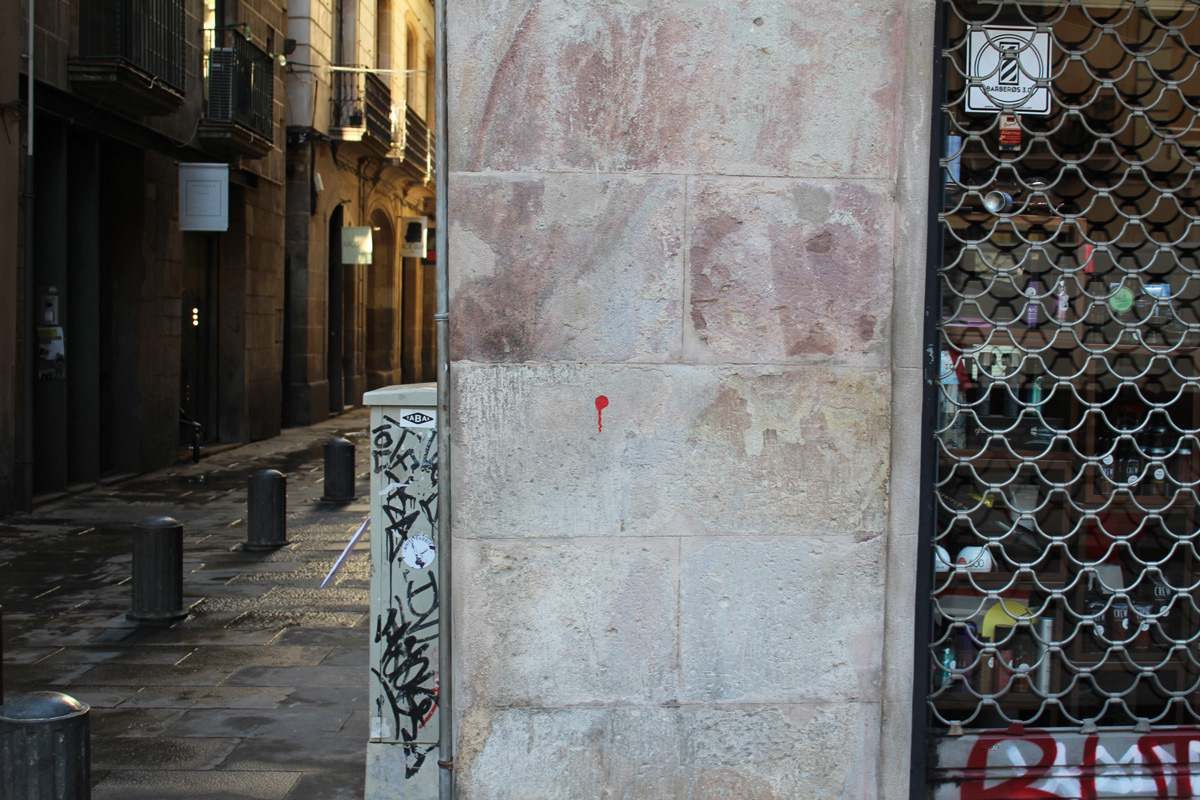
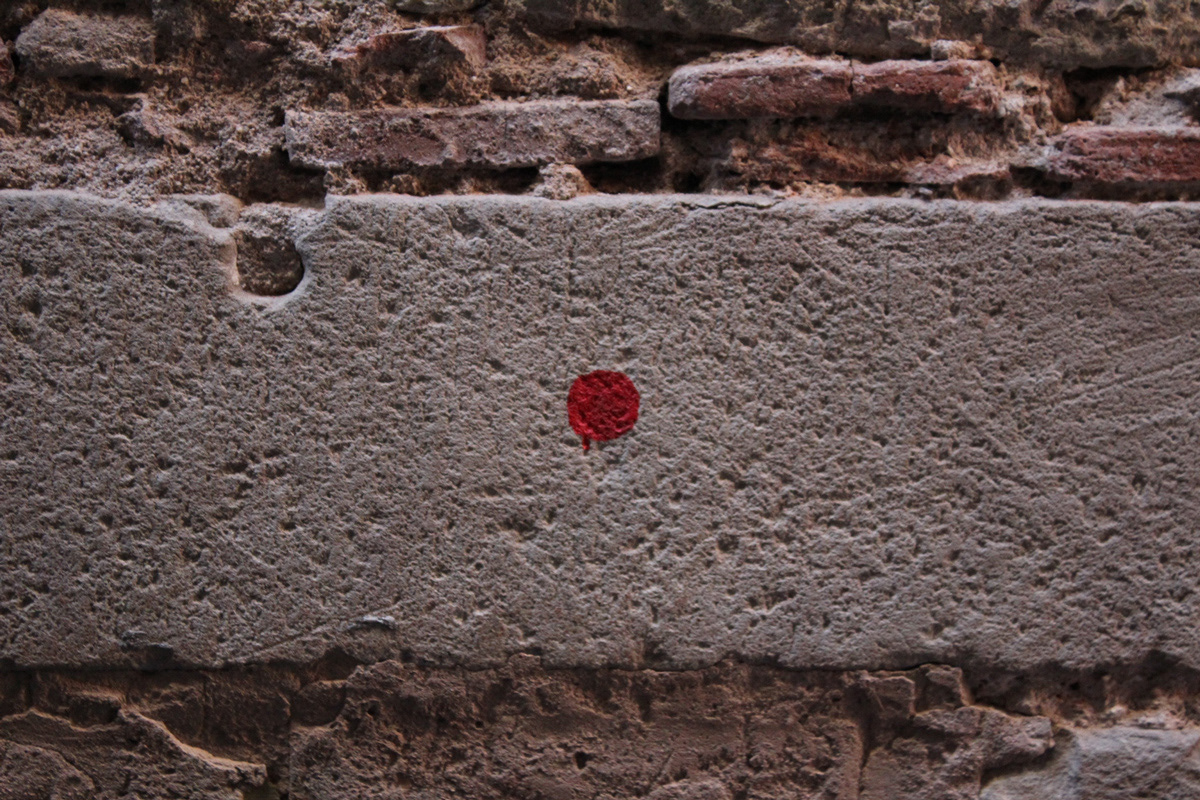
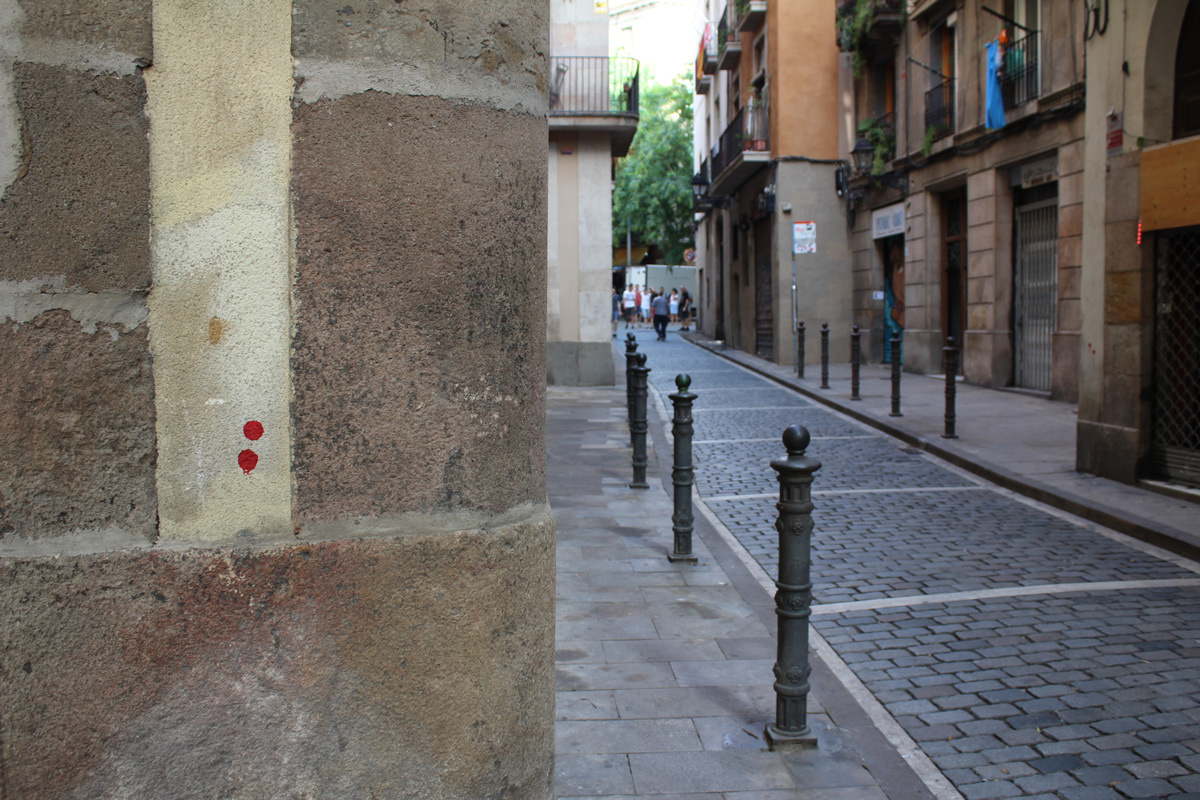
Documentation Extracts.
EXTRACTS
Here a selection of three reactions/extrapolated works to illustrate what emerged from the performance throught the documentation :
A. PARANOIA
The Red Dot gradually infected the entire city, its visibility clearly increasing night after night, but I had no way of knowing if it was noticed by the public.
However, I quickly received confirmation that it was indeed noticed.
The project made headlines after my intervention in the Raval district.
At that time, Raval was experiencing a peak of insecurity and violence due to the prominent presence of drug groups occupying various apartments.
Some residents assimilated the Red Dots as a gang symbol, and the rumor quickly widespread creating what newspapers described as “public paranoia,” stigmatizing the out-of-control situation in the neighborhood.
A phenomenon that recalls the misunderstanding “Graffiti” had suffered at its beginning.
When people encounter a symbol lacking clear significance, there’s often a natural inclination to attribute meaning to it.
The events in the Raval district serve as a prime example of how individuals interpreted or engaged with the Red Dot in diverse ways, reflecting their emotions, preoccupations, social status, and the dynamics of their neighborhood.
B. THE BLACK DOT
During a stroll to photograph some of the red dots in the Fort Pienç district,
I stumbled upon one of the most significant reactions to the RDT project.
Every red dot in this zone had been painted black. Hundreds of them.
It was a powerful display, not of cleansing, but of eradication, of attack.
Hours of labor must have been required for this “counter-performance.”
I could sense that behind this act lay a strong intention, though its nature remained elusive to me, leaving me to speculate.
In a sense, I found myself in the position of the trickster tricked.
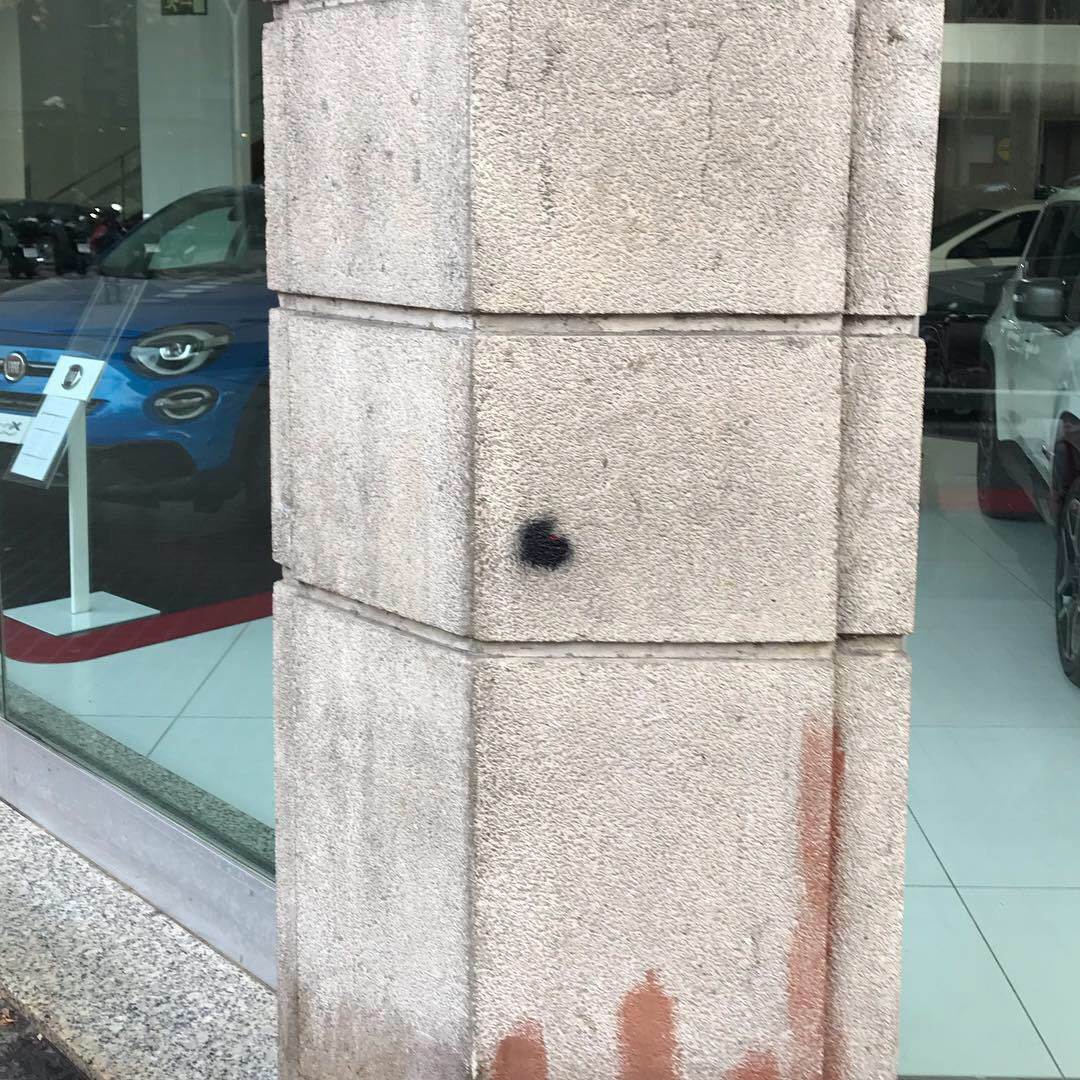
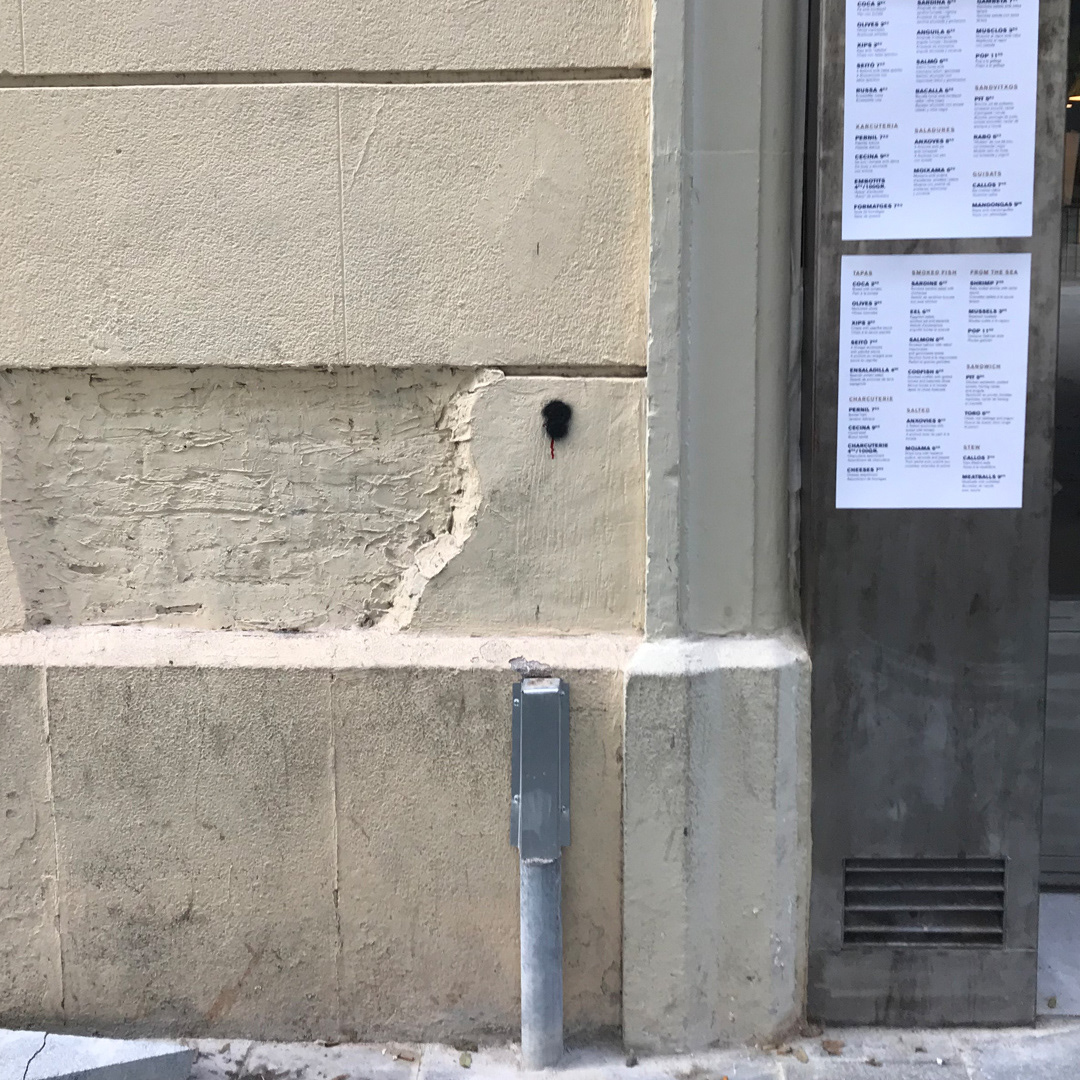
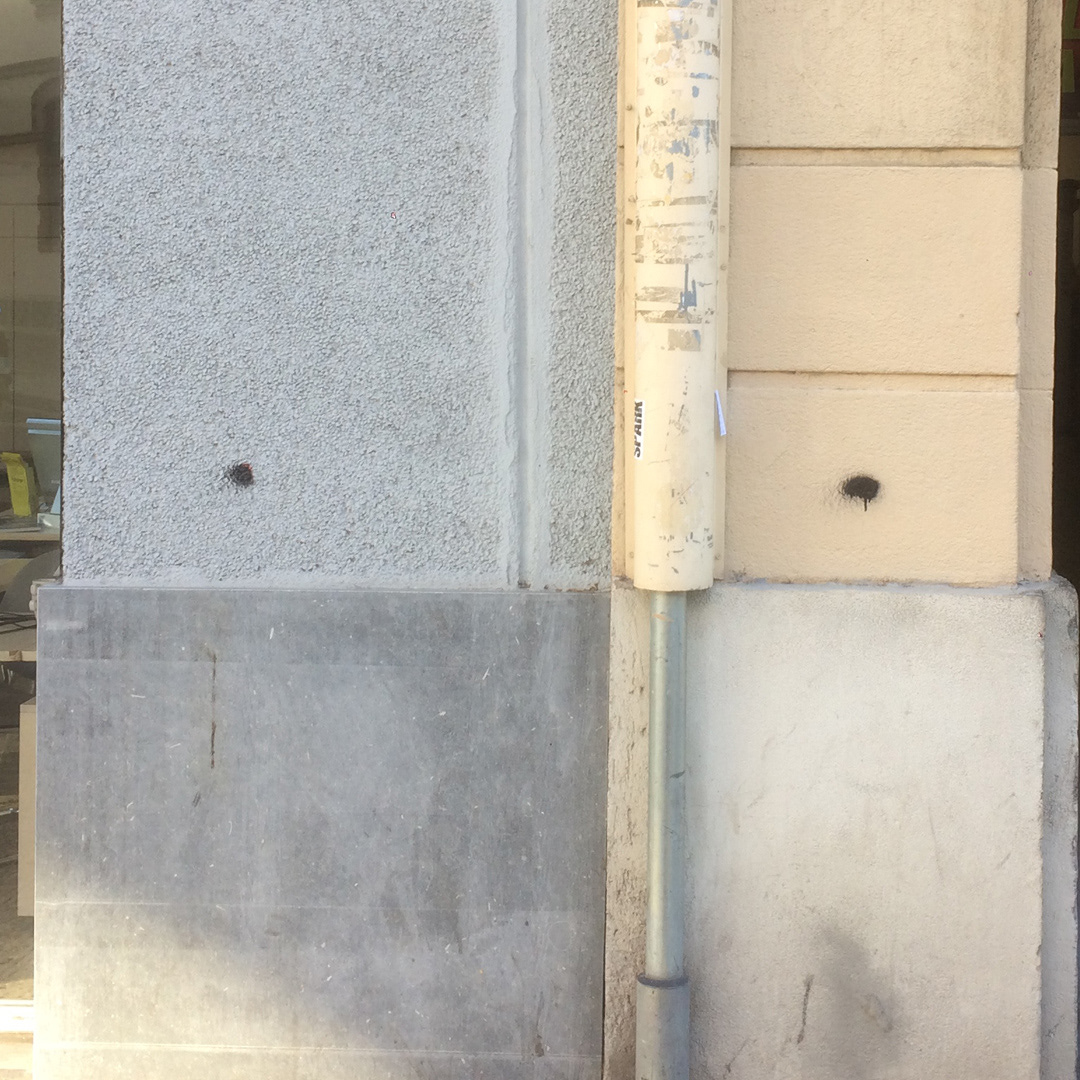
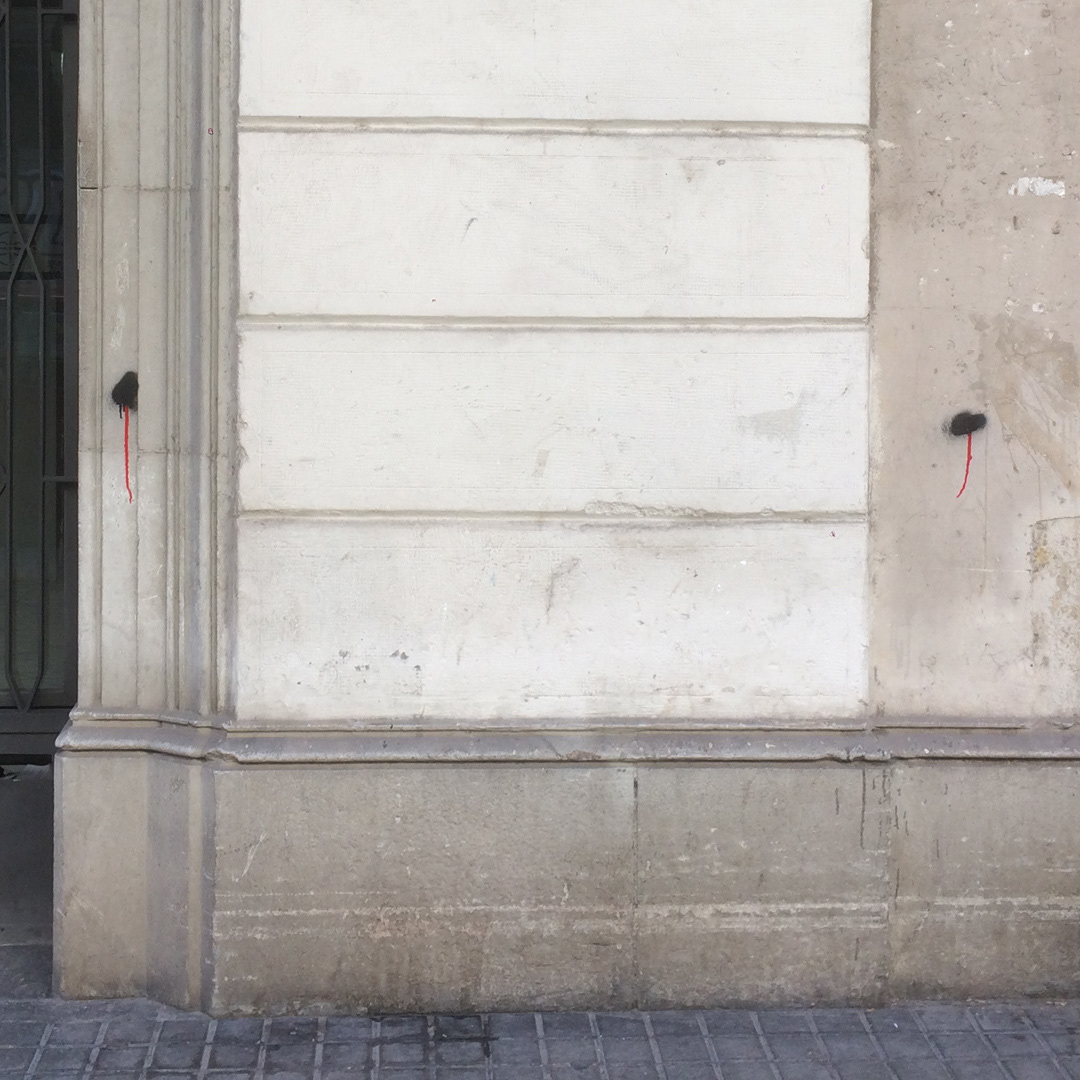
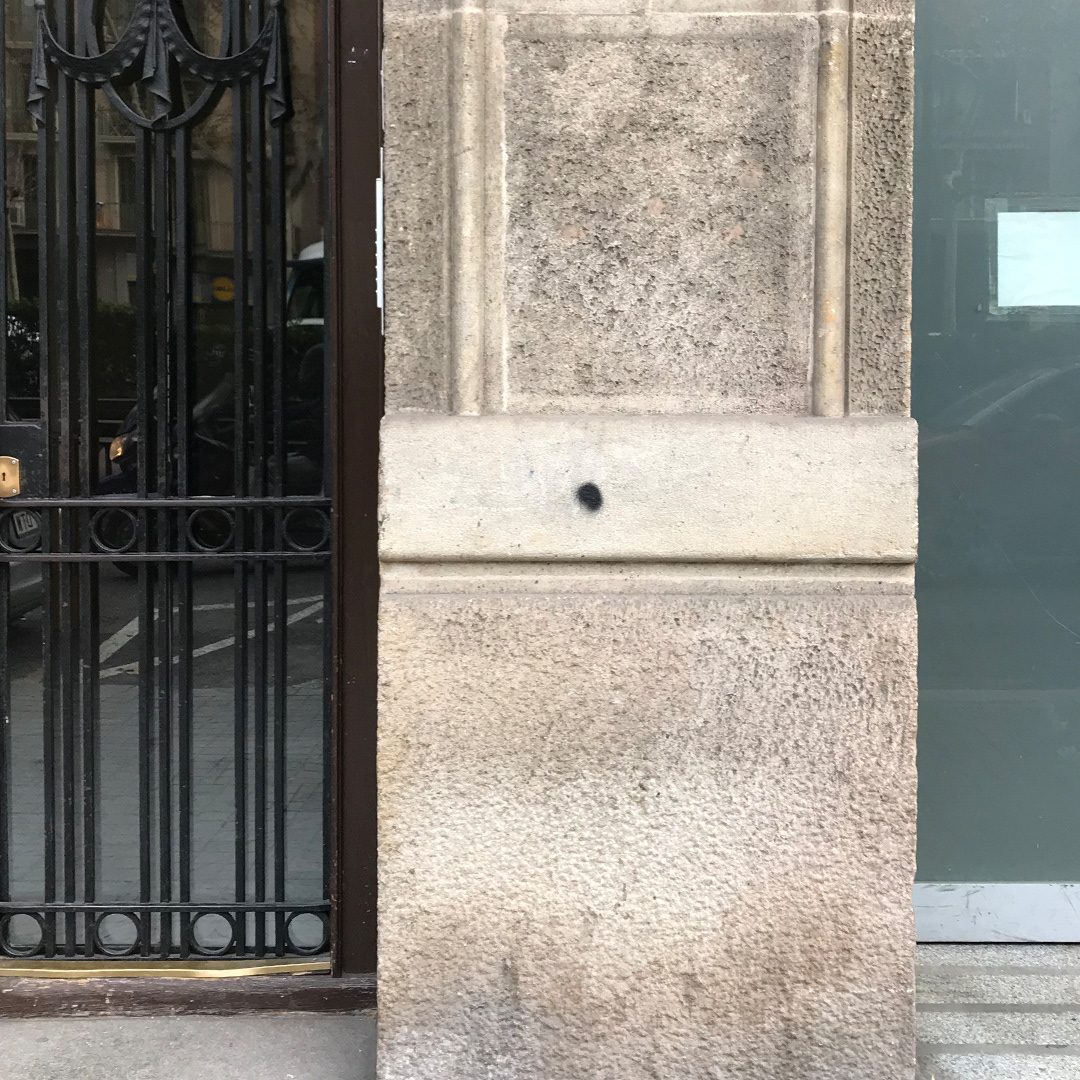
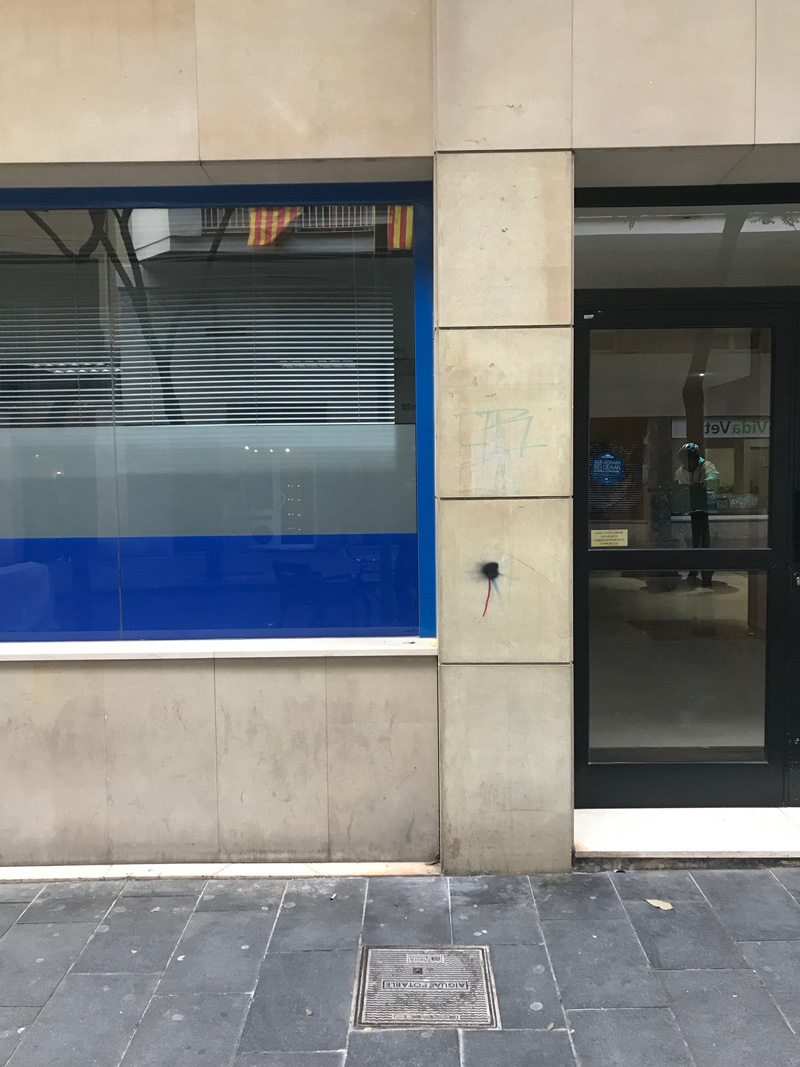
This reaction consumed me and demanded a response.
The typical territorial response would have driven me to repaint my red dots over the black ones, one by one.
But finally, I chose a different option.
First, because I wanted to convey my respect for this counter-performance, knowing the effort it must have entailed.
Thus, I decided to repaint hundreds of my red dots—not over the black ones but alongside them—
initiating a symbolic conversation of sorts.
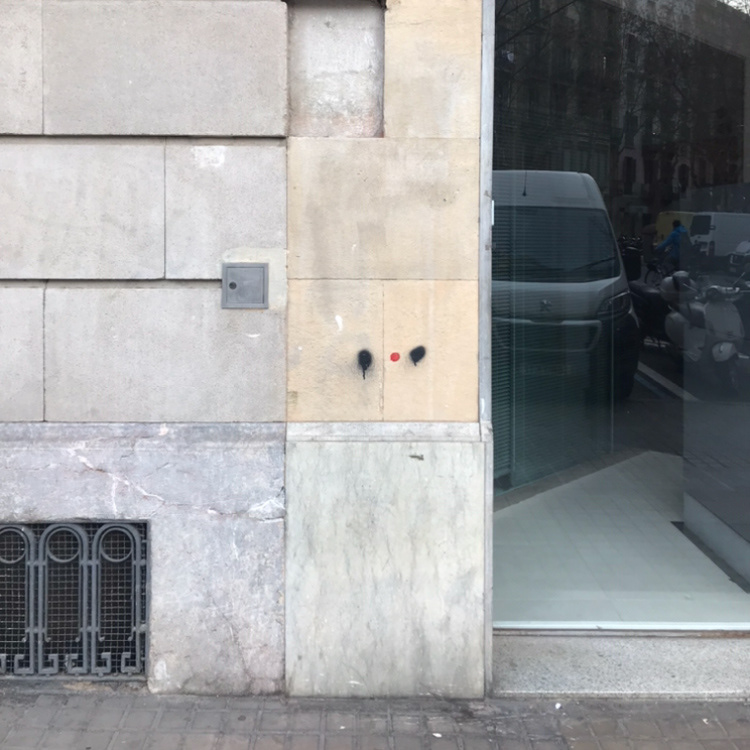
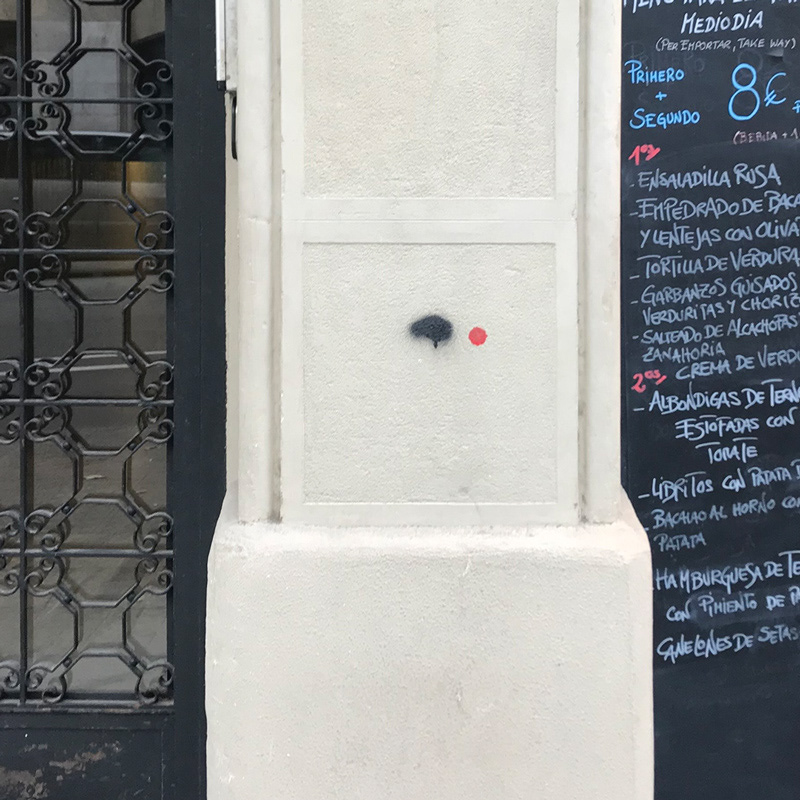
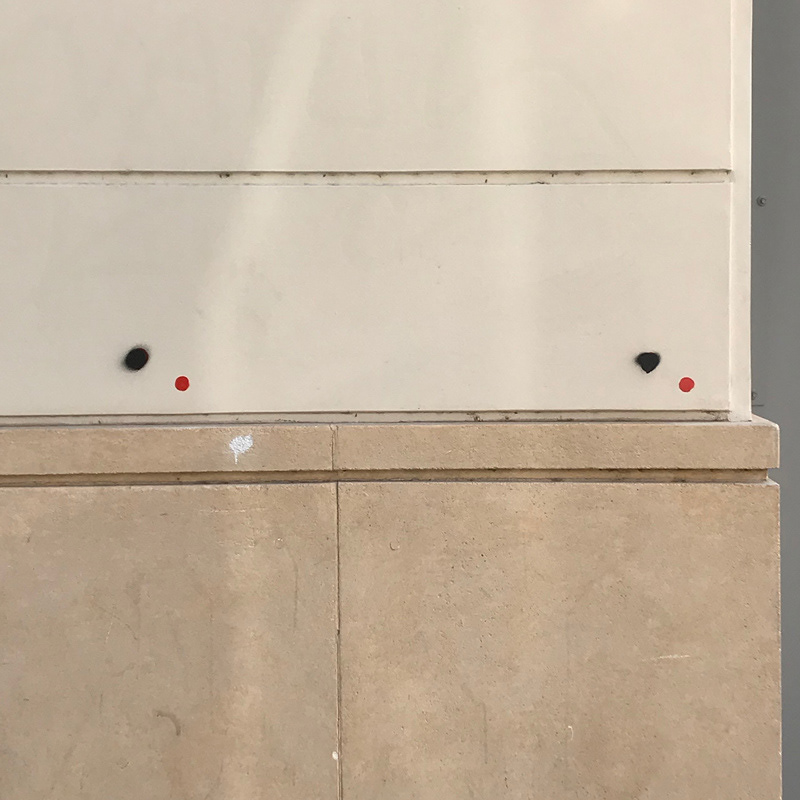
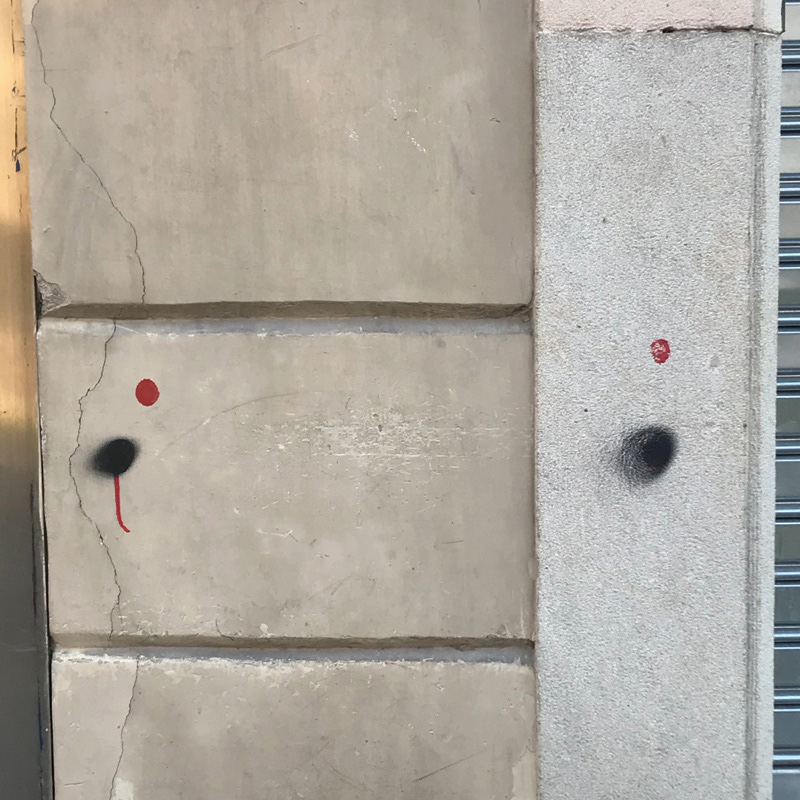
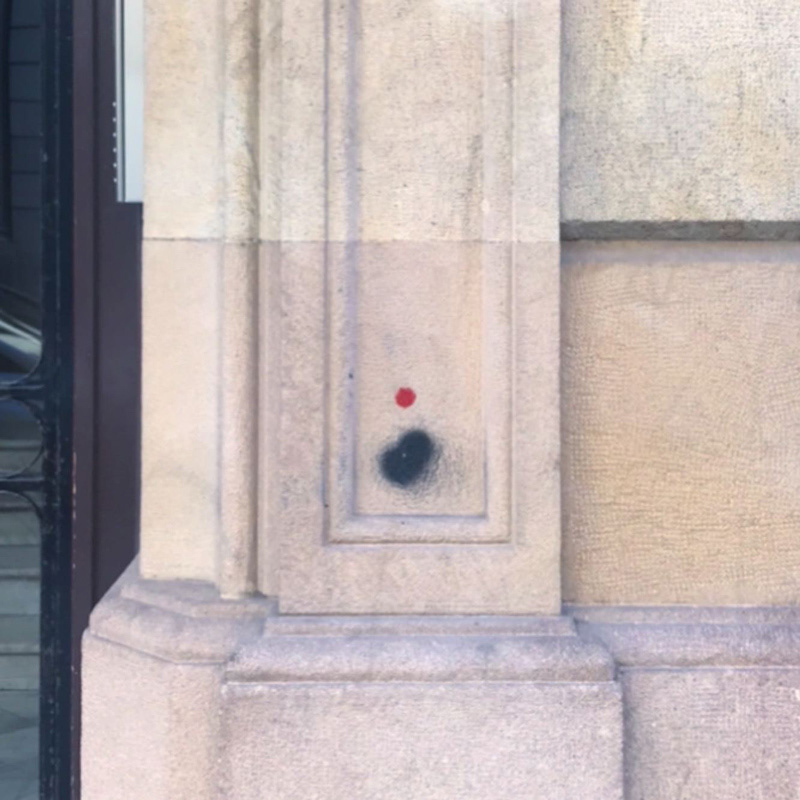
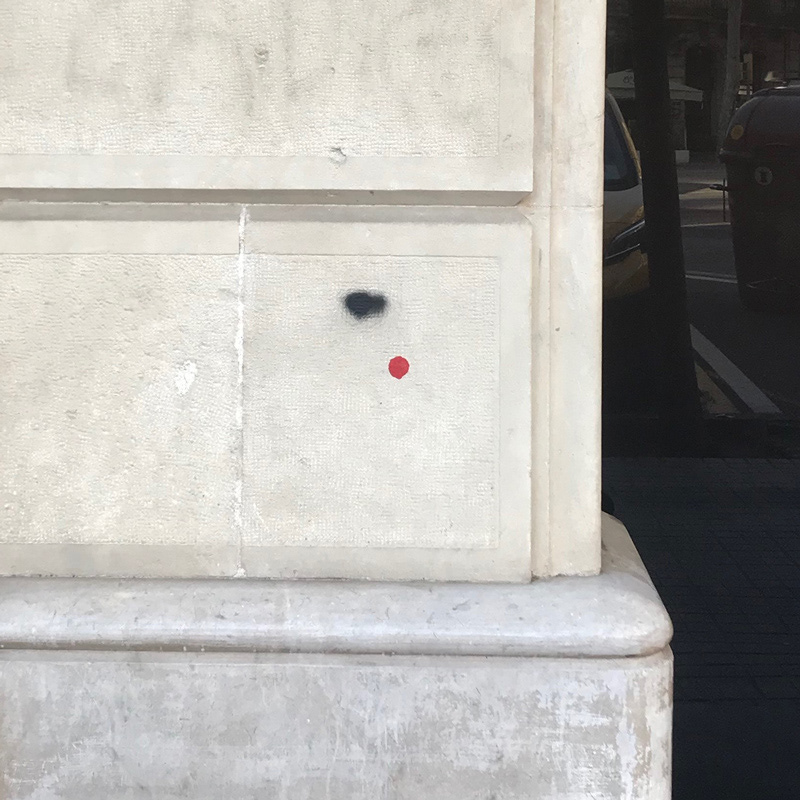
The “Red Dot Theory” embodies a multifaceted exploration of urban expression,
revealing layers of complexity and conceptual depth derived from a simple experimentation.
The examples highlighted herein—Paranoia, Black Dot, and Confine—offer but a glimpse into the myriad extrapolated artworks
and reactions that emanated from the project’s inception.
Each reaction, assumption, and interaction became an integral part of the project’s
evolving narrative, shaping its trajectory and imbuing it with a sense of shared ownership.
An attempt to transcend traditional notions of street art, blurring the boundaries between creator and audience,
observer and participant.
For those eager to delve into the project’s full breadth and complexity,
I invite you to explore the entirety of the project and its myriad reactions and extrapolated works on the Instagram account: @red_dot_theory.
